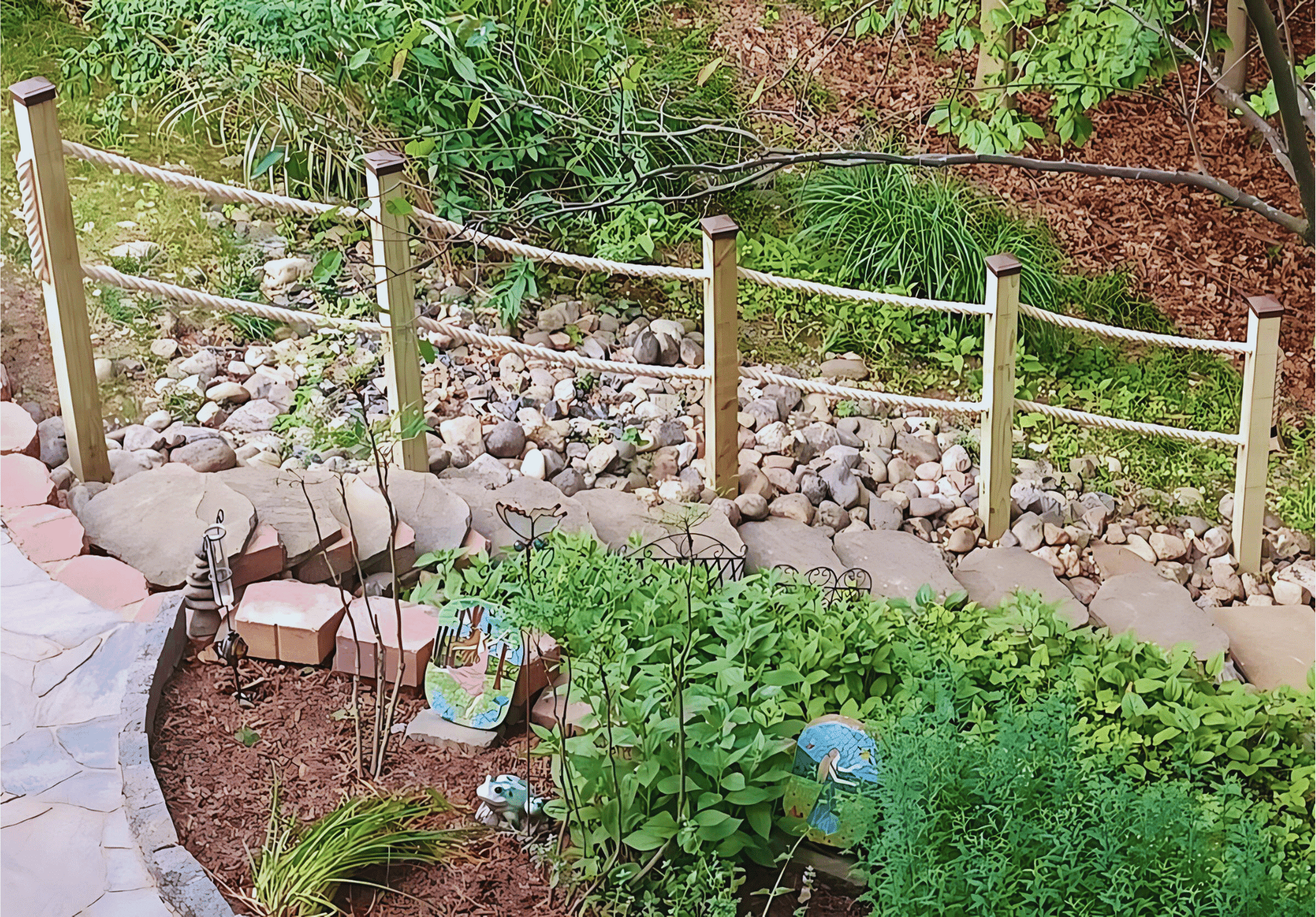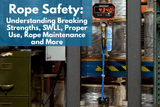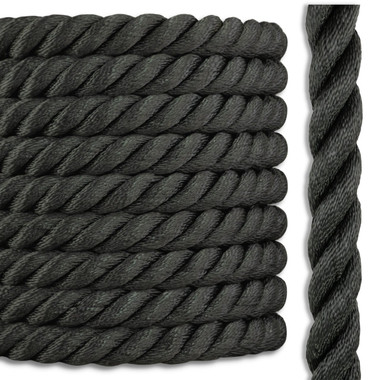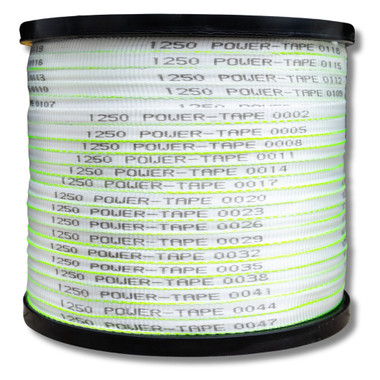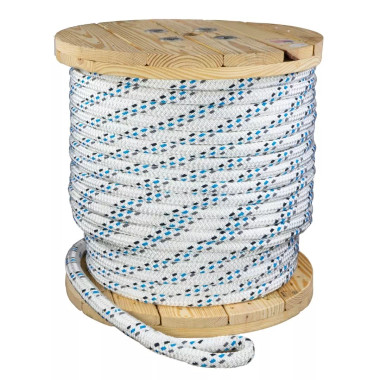Choosing the Right Rope for Your Landscape Project: A Complete Guide to Rope Types and Uses
Estimated 0 min read
When it comes to landscaping projects, ropes are often an overlooked but essential component. Whether you’re adding a decorative touch to a garden, creating a secure fence, or installing a rope swing for the kids, picking the right rope can make or break your project. There’s a lot to consider—durability, appearance, UV resistance, and even how the rope behaves in different weather conditions. The good news? We’ve broken it all down for you. Let’s dive into a complete guide to different types of ropes and their best uses in landscaping.
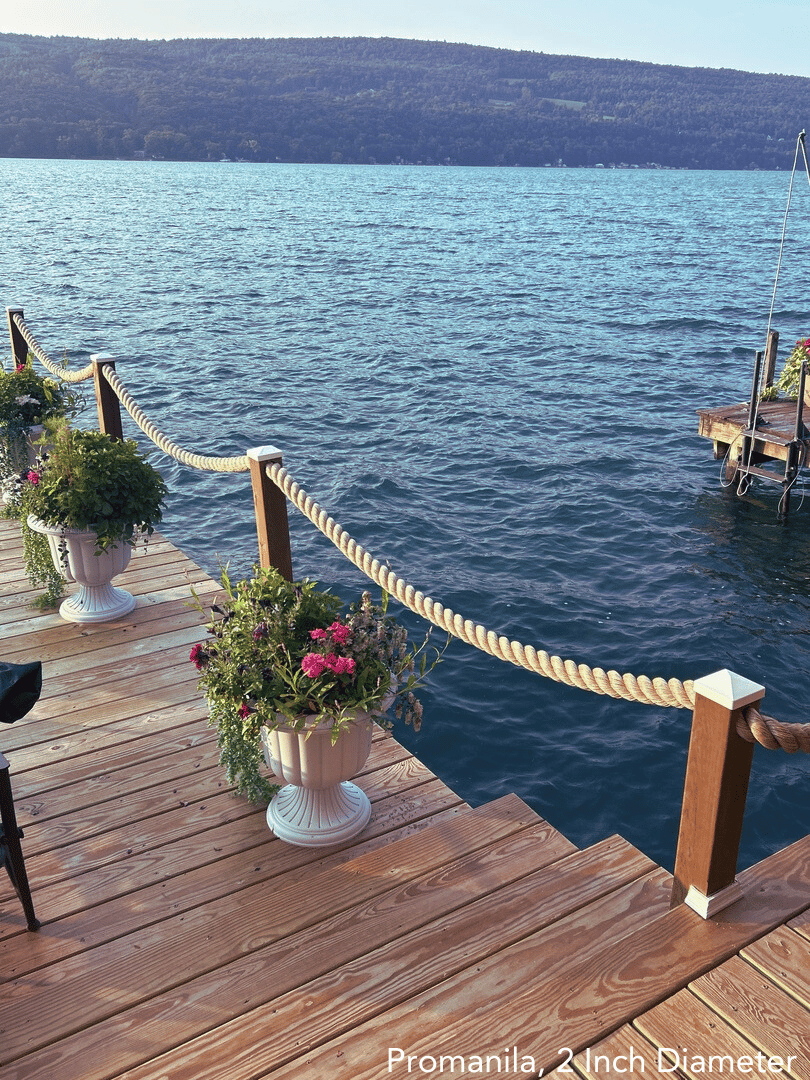
1. Promanila Rope (Unmanila Rope)
Best for: Decorative fencing, handrails, dock rope, outdoor rope railings
Promanila rope, also called Unmanila, is a synthetic version of the classic Manila rope, made to mimic the natural look but with more durability. It has that natural tan color that blends perfectly with outdoor projects while offering better resistance moisture than traditional Manila.
Unlike natural Manila, Promanila doesn’t shrink or break down as easily, making it a solid choice for climates that see a bit of everything but aren’t full-sun all year round. It holds up better than Manila when exposed to the elements and retains its strength for a long time. Whether you're building a rope fence or a garden handrail, Promanila gives you the look of natural fibers with the strength of synthetic.
Common Uses:
- Rope fencing around gardens or pathways
- Handrails for porches, decks, docks
- Outdoor decorations where a natural look is preferred
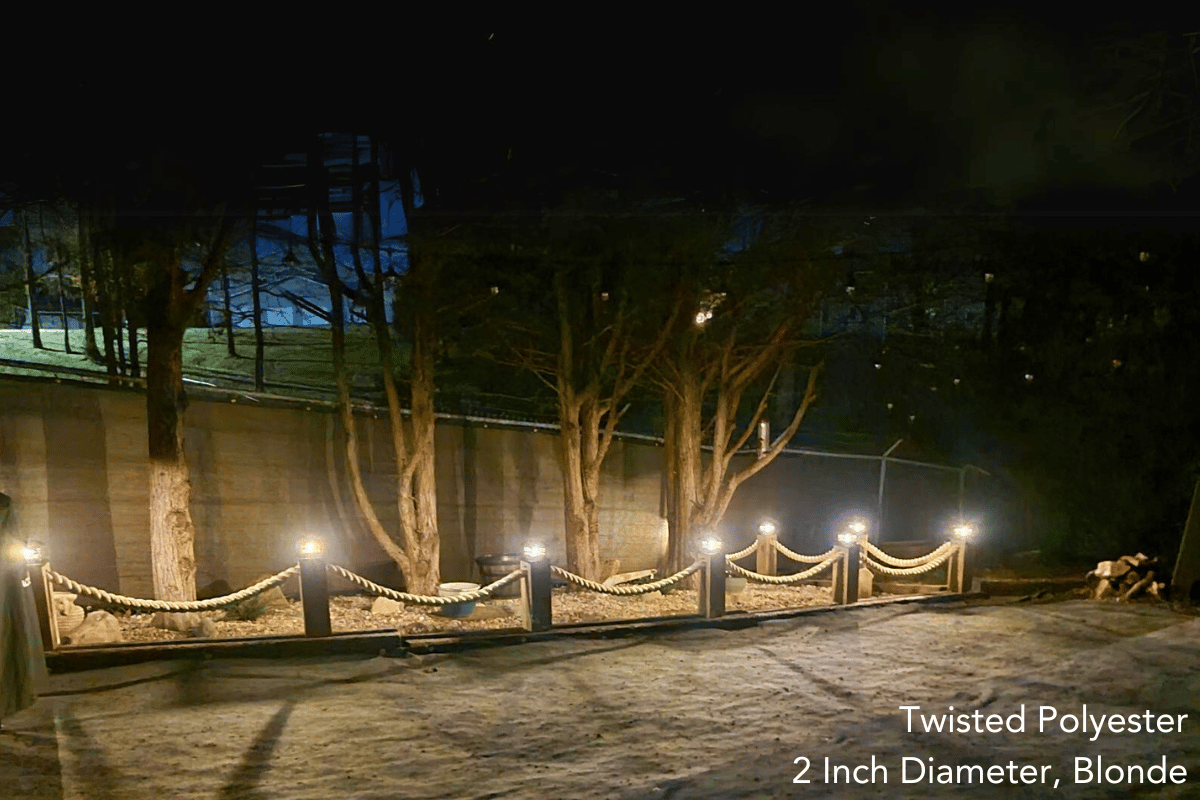
2. Twisted Polyester Rope
Best for: Outdoor projects in full-sun environments, high-strength needs
If you’re working on a project in an area that gets intense sunlight, twisted polyester rope should be at the top of your list. It’s known for its exceptional UV resistance and strength, making it a great choice for long-term outdoor use. It’s also resistant to abrasion, so you won’t have to worry about the rope fraying or wearing down over time, even in rough environments.
Twisted polyester rope has minimal stretch, which is ideal for applications where you need the rope to maintain its length and tension over time. It’s available in multiple colors, so whether you’re looking for a clean white rope for a minimalist look or something darker like black or blonde to blend with your landscape, polyester rope has you covered.
Common Uses:
- Long-lasting outdoor fences
- Rope swings for kids
- Securing heavy loads in outdoor projects
3. Black Polyester Combo Rope
Best for: Aesthetics-driven projects, fencing, and decorative ropes
This rope combines polyester with polypropylene, giving it a unique combination of strength, flexibility, and a sleek appearance. The black polyester combo rope is a favorite for those who want both function and form—it's soft, high-strength, and stands out visually. Thanks to its UV and abrasion resistance, it’s a great option for outdoor projects that require a stylish yet functional rope.
This rope works well in both decorative and functional settings. Its dark, sleek finish adds a touch of elegance, making it a go-to choice for more polished outdoor spaces like gardens or terraces. It’s durable enough for practical uses while still being an aesthetic asset to your landscape project.
Common Uses:
- Decorative rope fencing around patios or gardens
- Outdoor handrails
- Rope swings with a modern touch
Shop Black Polyester Combo Rope
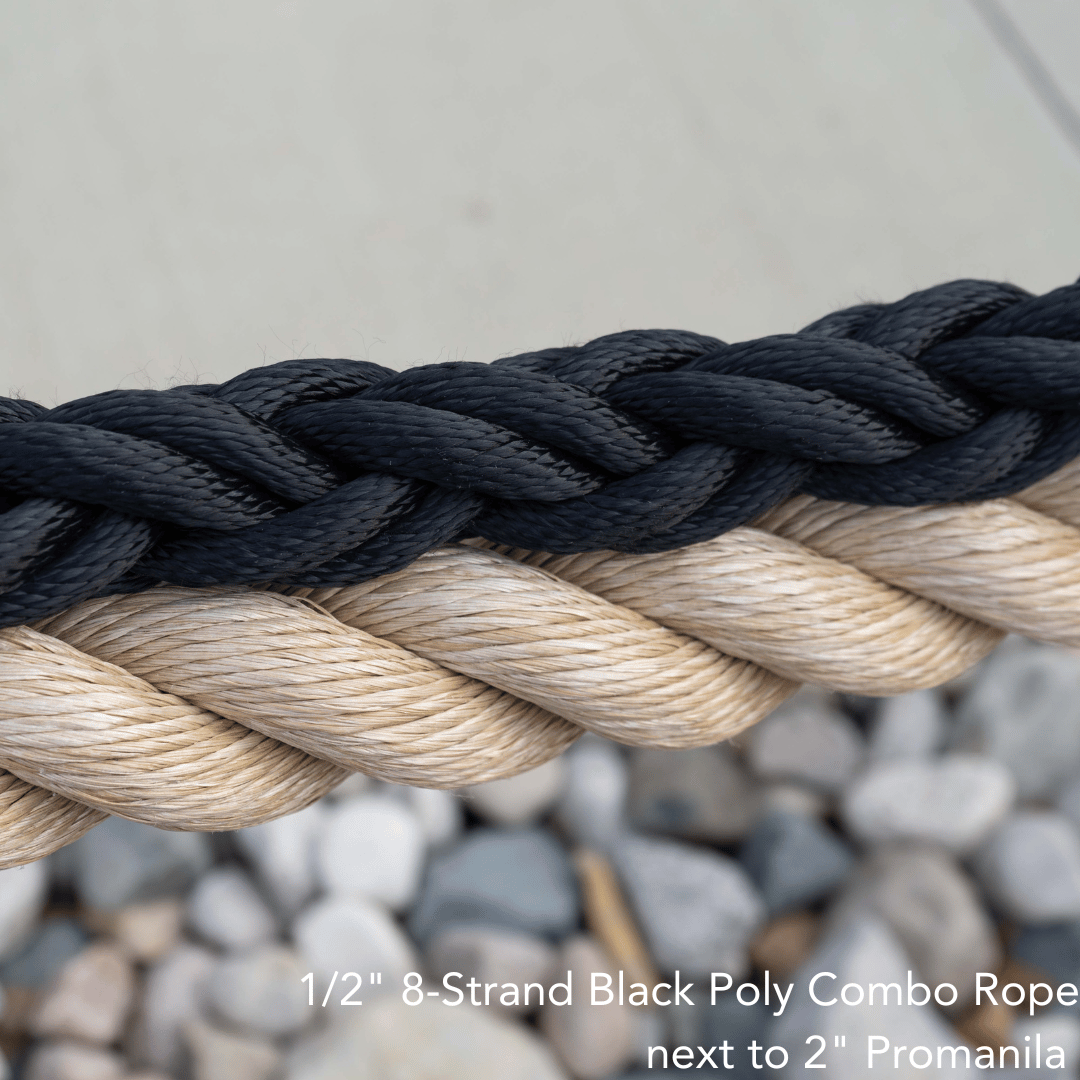
4. 8 Strand Polyester Rope
Best for: Heavy-duty outdoor uses, rope fences, and handrails
If your landscape project requires a heavy-duty rope that’s both functional and decorative, the 8-strand polyester rope is your answer. Known for its elegant and durable design, this rope is 100% polyester, making it extremely resistant to UV rays and general wear and tear. Its unique 8-strand braid means it's thicker and stronger than most twisted ropes, making it ideal for more robust installations. It is also important to note that the shape of the braid means the diameter can run a little larger than measured.
The rope comes in several colors like white, black, and blonde, so you can choose the one that best suits your aesthetic preferences. Whether you’re building a fence, a swing, or a handrail, 8-strand polyester rope can handle the job while looking great.
Common Uses:
- Heavy-duty rope fences for large gardens or estates
- Handrails along outdoor walkways
- Bed swings or porch swings that need extra durability
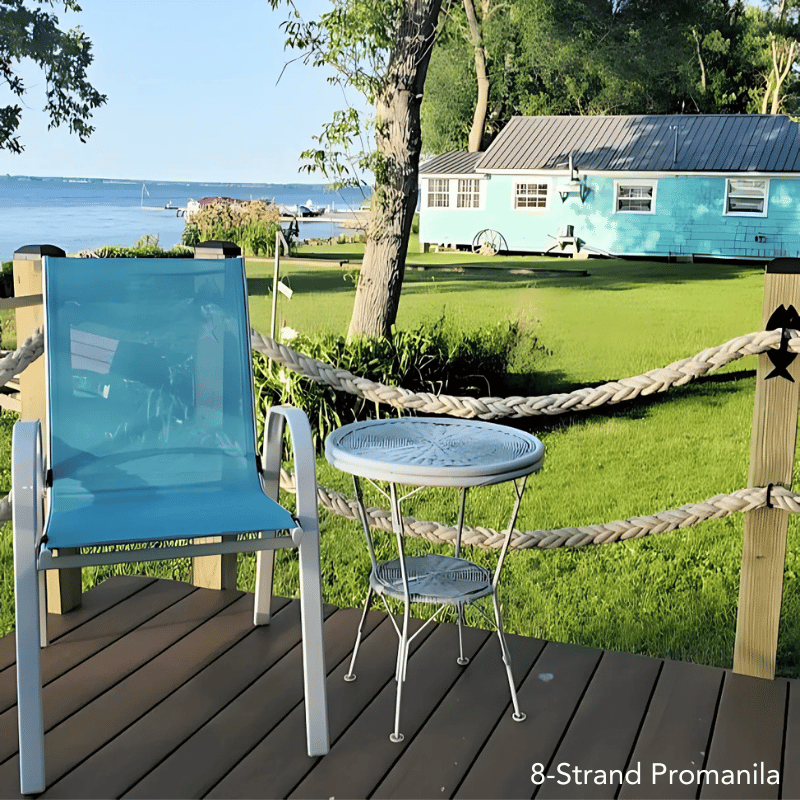
5. 8 Strand Promanila Rope
Best for: Decorative fencing, outdoor projects with a rustic look
The 8-strand Promanila rope is a synthetic alternative to natural manila, much like its twisted counterpart but with a more robust structure thanks to the 8-strand braiding. This rope provides the natural, rustic look of manila but is built to withstand outdoor conditions without the usual downsides of natural fiber ropes like rot or shrinkage.
It’s an excellent choice for any outdoor project where you need a rope that can weather the elements while still maintaining that traditional look. One thing to know about 8 strand ropes is that the diameter can run a little large, due to the shape of the braid. It’s commonly used in both decorative and functional applications where you want the rope to stand out while also being durable.
Common Uses:
- Rustic fences around gardens or properties
- Decorative rope accents on outdoor furniture
- Rope railings for porches or terraces
6. Twisted Nylon Rope
Best for: Projects requiring high strength and flexibility
Nylon rope is known for its high strength and ability to stretch without breaking. This makes it a great choice for landscaping projects that need a rope with some give, such as for securing heavy items or absorbing shock loads. Twisted nylon rope also boasts excellent UV resistance, which is key for any outdoor application, and it holds up well under abrasion.
If you need a rope that’s going to last and take on heavy-duty tasks, twisted nylon is up to the challenge. Just keep in mind that it does stretch more than other types of rope, which can be an advantage or disadvantage depending on your project. It also only comes in white or black, and doesn’t have the natural look of some of our other ropes.
Common Uses:
- Securing structures or heavy loads
- Hammocks or other outdoor seating that require flexibility
- Rope that needs to handle varying weight and tension
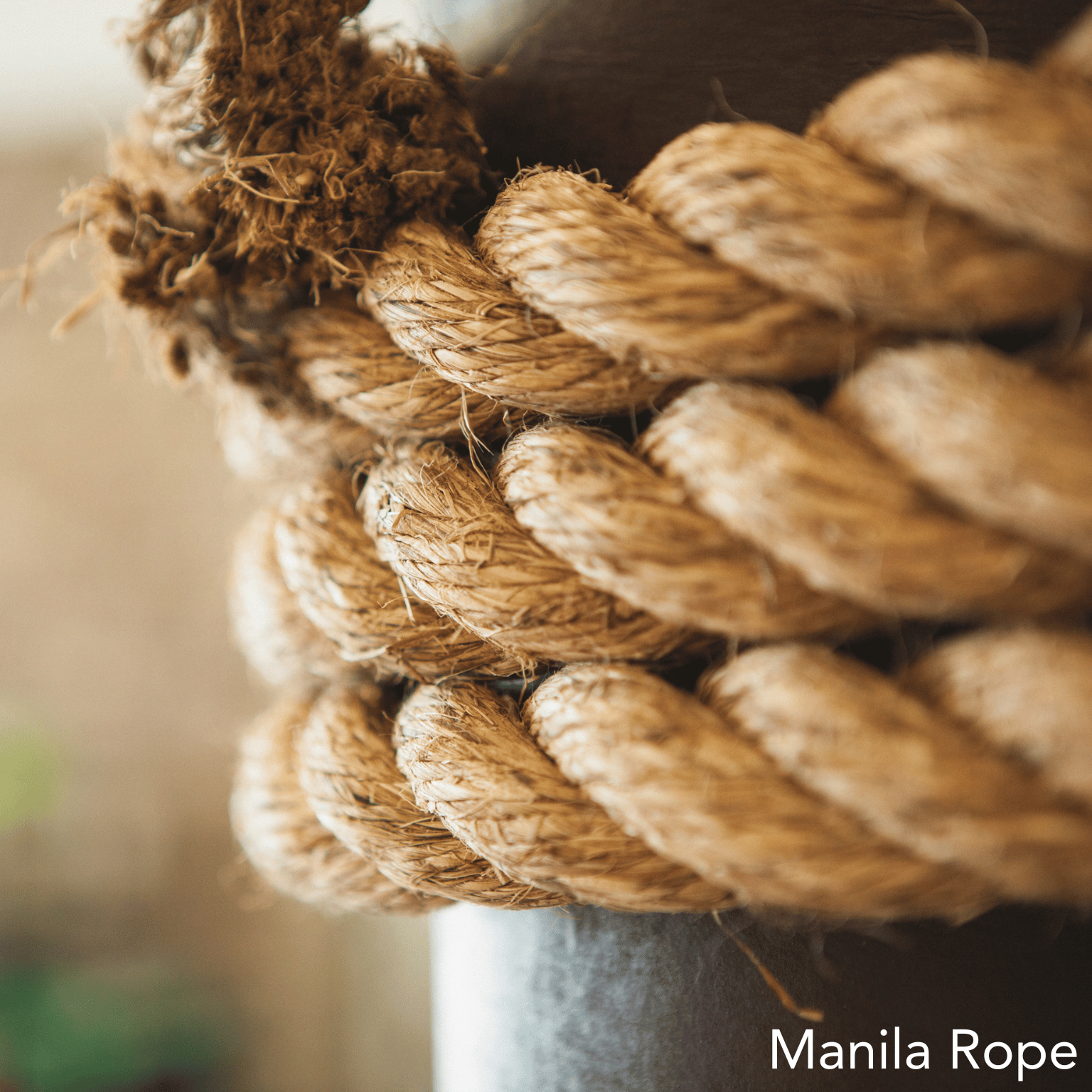
7. Manila Rope (Hemp Rope)
Best for: Rustic aesthetics, indoor or weather protected projects, heavy-duty outdoor projects
Manila rope, also known as hemp rope, is the classic choice for many outdoor projects. It’s strong, reliable, and has that natural, rough texture that people love for rustic or nautical-themed landscapes. However, it does have some downsides—manila rope shrinks when wet, can rot over time if exposed to moisture, and expands in diameter when wet, which can be problematic if you’re working with tight fits or brackets. For these reasons, many of our customers use Manila for indoor decorative projects like rope walls or rope shelves.
Despite the drawbacks, manila rope is incredibly strong and has a high breaking strength. It’s a go-to for those who need a natural fiber rope that looks great and can take a beating. Just be prepared to maintain it a bit more than synthetic alternatives.
Common Uses:
- Rustic fences and decorative railings
- Rope swings with a classic, natural look
- Nautical or rustic-themed outdoor (and indoor) designs
Conclusion
Choosing the right rope for your landscaping project is all about matching the right material to the job. Whether you need the classic, natural look of manila or the durability of a synthetic alternative like Promanila or Twisted Polyester, there’s a rope out there that fits your needs. Keep in mind the environment your rope will face—sun, rain, snow, or just daily wear and tear—so you can select a rope that will last and look great for years to come.
When you’re ready to get started on your project, knowing your options and understanding the strengths of each type of rope will help you make the best choice. From fences to swings, handrails to decorative accents, the right rope will take your landscape from basic to beautiful—and make sure it stays that way for the long haul.
